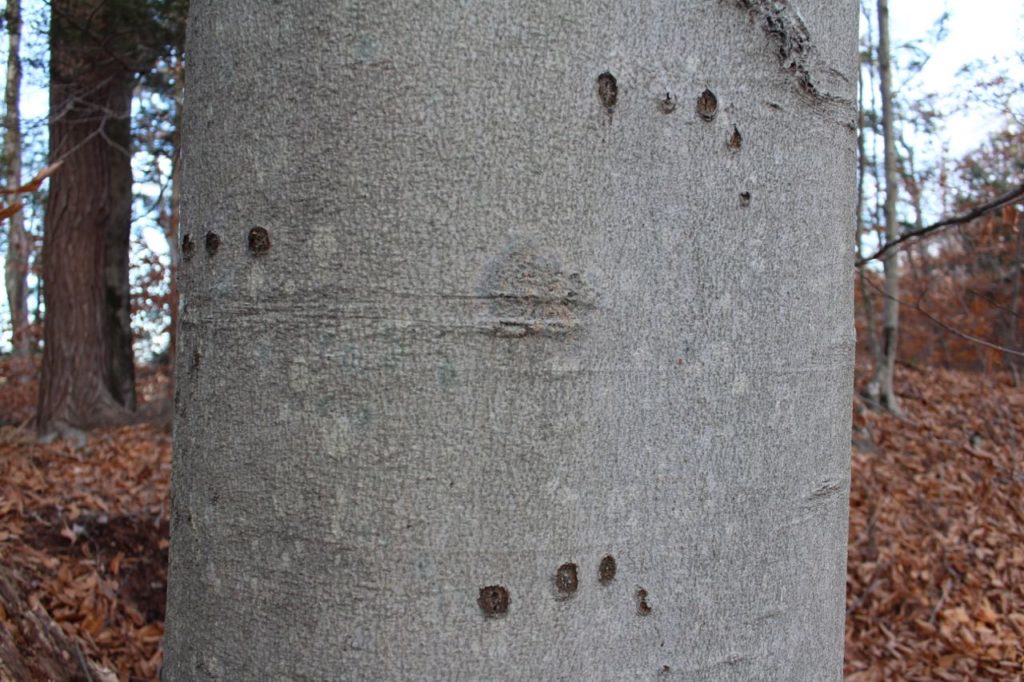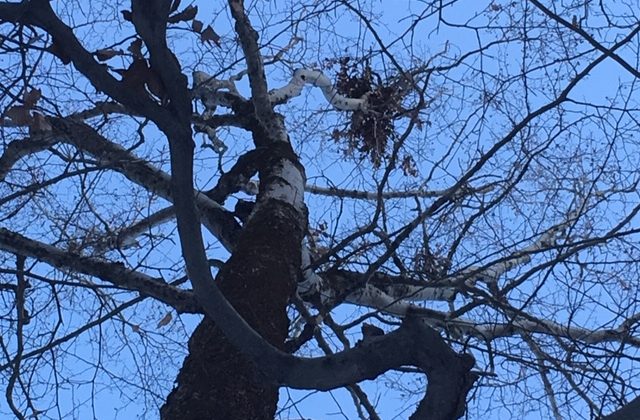Reading Forest Signs: Bear’s Nests
Text and Photos by Wiley Wood
The first dusting of snow in the forest shows us what we know anyway—the woods are full of animals, we just don’t see them. A day after the snowfall, you might come across the print of a foraging mouse traveling from the base of a windthrown tree to a cluster of ferns and back. Or, on a log by the trail, an impression of the long, slightly knobbed, almost prehensile fingers of a raccoon where the animal has run the log’s length.
Recently, investigating a tree stump whose powdery remains had been scattered across the thin snow, I found the tracks of a bear: the oblong, almost man-sized back foot, the rounder forefoot, the distinct claw marks, the fleshy pads.
As you encounter bear sign in the woods, you start to recognize a certain attitude. Walking the edge of a clearcut in early summer, admiring the glossy, copper-colored bark of the young pin cherry growing in thickets to a height of eight or 10 feet, I was surprised to notice that many of the slender trunks had been snapped in two at head height so that their tops hung down. In thicket after thicket it was the same thing: the buckthorn, the birch and the shad saplings had been left undisturbed, but the pin cherry, with its lustrous bark, had been snapped. Why would anyone want to vandalize these trees? Of course it was a bear. The sparse clusters of bright cherries had been growing 10 feet up, accessible to passing birds, and the bear had pulled them down and raked them into his mouth with his teeth. This same gesture has been described often enough by the owners of bent birdfeeder poles, who have watched from the window as a bear brought down and ate their birdseed.
It’s not unusual, walking along the forest edge, to come across a line of pin cherry or chokecherry trees with bent and broken tops. If it’s still cherry season, you may also see the freshly thrashed branches, the teeth marks, the stems stripped of all but one or two last berries. Only a bear has the impunity, the don’t-mind-if-I-do disregard, to leave such a trail of destruction in his wake.

December, when almost all the trees are finally clear of leaves, is a good time to see bear’s nests. These are stations high in the branches of our mast-bearing trees where bears have fed on beechnuts or acorns. The first clue that a bear has been feeding in a tree is usually the broken limbs scattered around the base. Bears are messy eaters, and they are powerful animals. Squirrels and porcupines will drop niptwigs up to half an inch in diameter as they feed. Bears will break off branches up to two or three inches thick, and because they are severed while the tree is still alive, they hold their leaves conspicuously.
If you pass a tree in the forest with torn-off branches at its foot, look into the canopy for the messy stacks of broken branch ends that are the bear’s nests. The bear, installed in a high crotch of the tree, pulls the surrounding branches toward him to strip them of nuts, breaking them in the process. It is the same gesture the bear makes in helping himself to pin cherries or birdseed.
A single tree can have three or four bear’s nests, and if the tree is a smooth-barked beech, you might also see the marks of the bear’s claws deeply scoring the trunk as he (or she) climbed.

